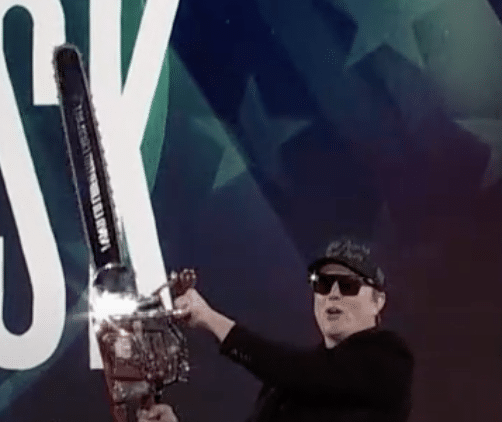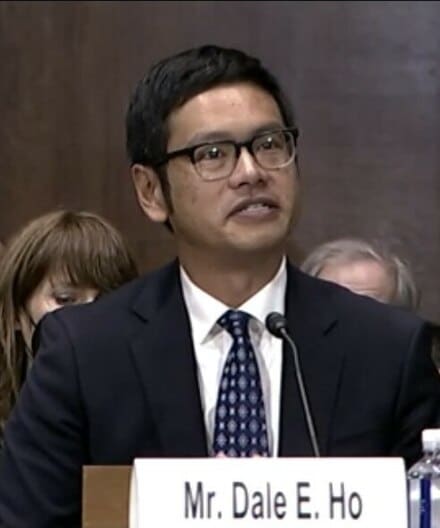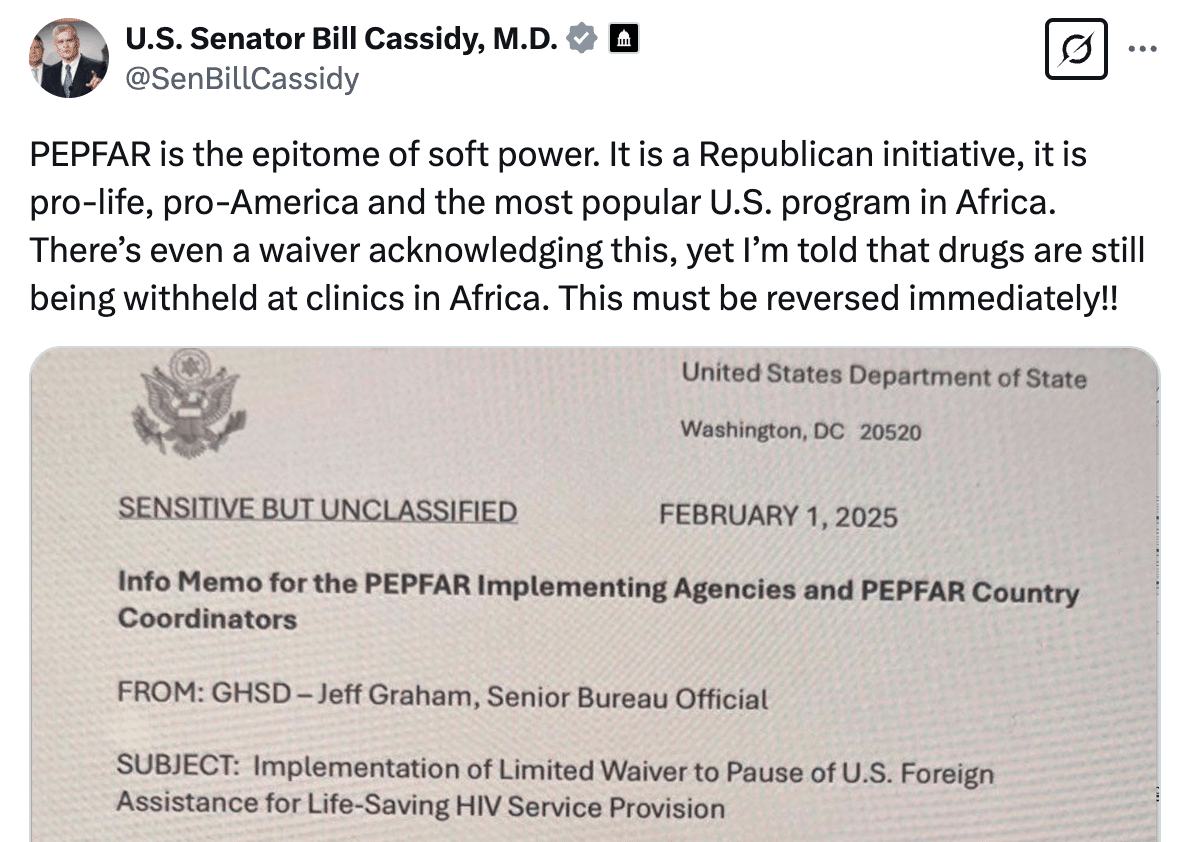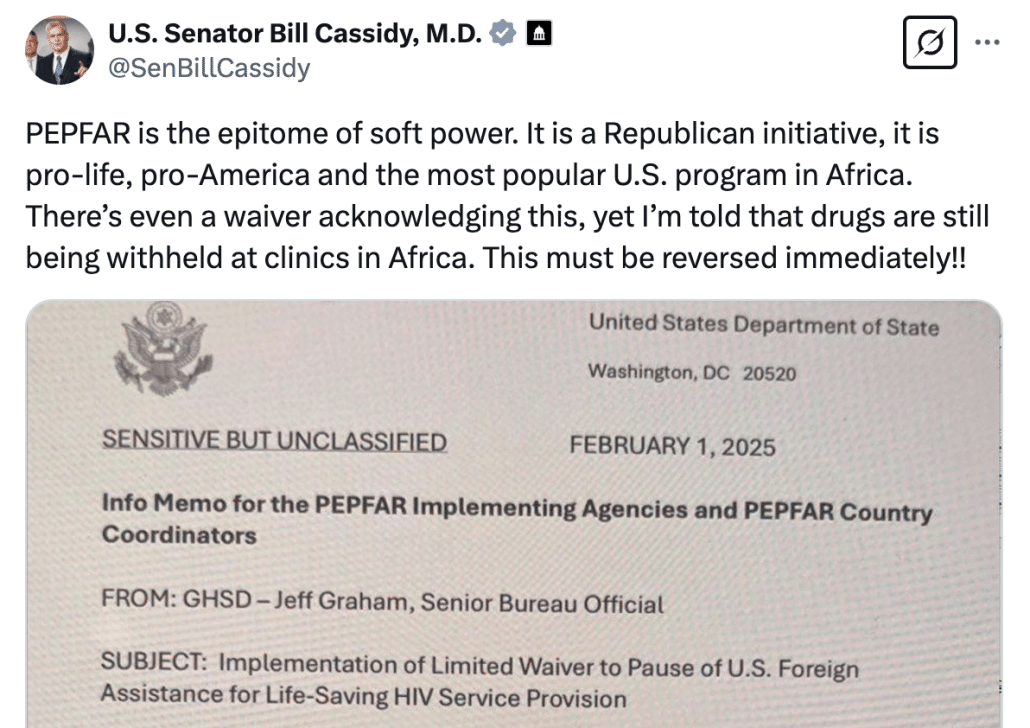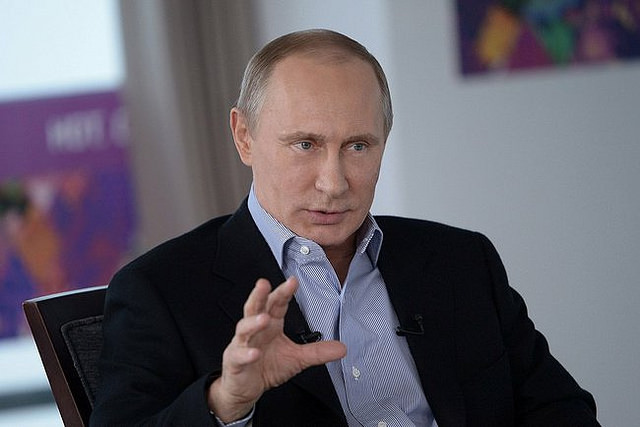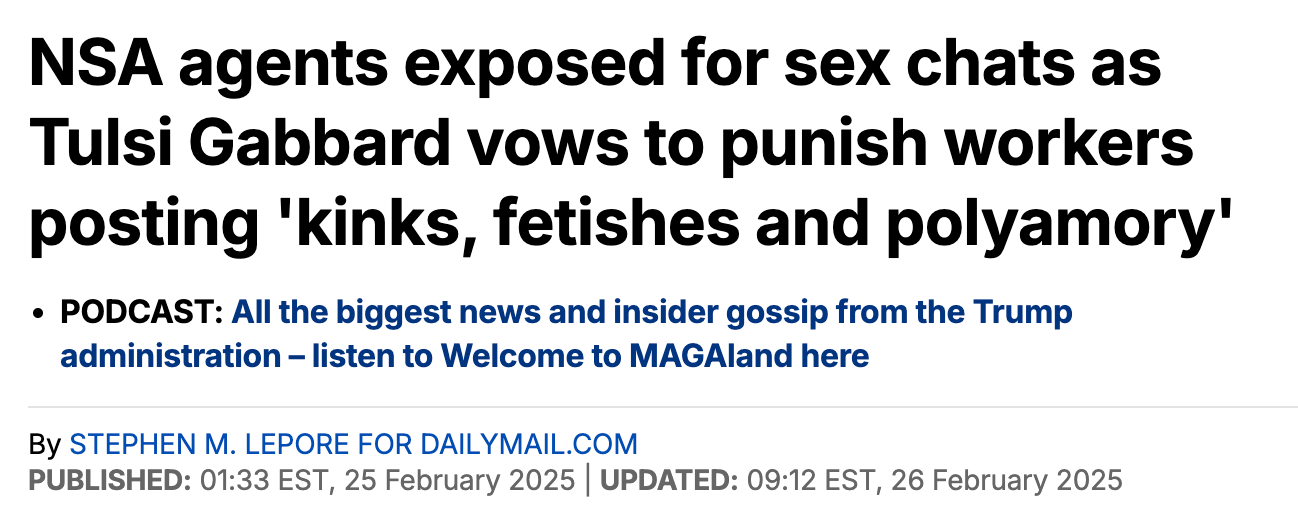This story, about a Biden-to-Trump voter in rural Michigan who got fired in the probationary worker purge, caused a bit of controversy on Bluesky. After personalizing Ryleigh Cooper, describing her educational successes and her struggles to conceive a child, the story described how Trump’s empty promise to make IVF free was one of the things (the other being high costs) that led Cooper, after a 15-minute struggle in the voting booth, to vote for Trump instead of Kamala Harrs.
Cooper did not want to think about what happened three months prior but her mind went there anyway. To the voting booth in Baldwin’s town hall, where she filled out every part of the ballot before turning to the box that said “Presidential.” She recalled staring at it for 15 minutes.
She did not want to vote for Trump. Cooper hated what he said about women and hated how he treated them. Her family always said the women who accused the president of sexual assault had either made it up or deserved it. Cooper heard them and kept her own experience a secret, thinking that they might feel the same way about her.
She voted for Joe Biden in 2020, her first time casting a ballot in a presidential election. But life felt more complicated these days. Her mortgage was too expensive, groceries were nearly $400 a month, and one single cycle of IVF could cost more than 10 percent of her annual household income.
Trump, at a campaign stop an hour and a half south of her, had promised to make IVF free. She knew that from a video clip she saw on TikTok. And she had believed him.
A number of lefties argue that Cooper got what she voted for and is due no sympathy.
Even ignoring basic humanity, they’re missing how people decide to vote, and so also how people might choose to fight fascism.
They vote based on what their close families and friends do and say. As the piece notes, people in Baldwin, MI — one of the poorest towns in MI — are predominantly Trump people.
Most people in Baldwin like Trump; more than 62 percent in Lake County, which includes the town, voted for him in November and in 2020. But people don’t talk about it. Politics here, at least until recently, felt removed from everyday worries.
 That’s not surprising. Baldwin is at the edge of a large swath of National Forest. I’ve driven through, at least twice; the area is pretty, but I drove through on the way to places on Lake Michigan that are beautiful, and so attract wealthy outsiders like Pete Buttigieg and tourism dollars (Baldwin is about an hour closer to Traverse City than to Grand Rapids). The area is focused on forestry and outdoor activities like hunting and fishing (a lovely bike trail ends in Baldwin). Cycling close to there once, I remember the discomfort of hearing people shooting on property sporting a Confederate flag flying right next to the bike trail.
That’s not surprising. Baldwin is at the edge of a large swath of National Forest. I’ve driven through, at least twice; the area is pretty, but I drove through on the way to places on Lake Michigan that are beautiful, and so attract wealthy outsiders like Pete Buttigieg and tourism dollars (Baldwin is about an hour closer to Traverse City than to Grand Rapids). The area is focused on forestry and outdoor activities like hunting and fishing (a lovely bike trail ends in Baldwin). Cycling close to there once, I remember the discomfort of hearing people shooting on property sporting a Confederate flag flying right next to the bike trail.
There are news outlets close, in Big Rapids and Cadillac. But there’s not much substantive news, which may be why the piece describes that people don’t talk about politics. The article describes Cooper accessing two kinds of information: the “news” about Trump’s promise to make IVF free, which she found on TikTok, and Facebook posts from her grandmother and a former teacher parroting right wing lines.
She thought about the Facebook posts she had seen a few days earlier.
“It’s February 3,” her grandmother posted, “and we’re going in the right direction.”
“Any government employee who is afraid of transparency,” wrote the man who taught her AP government class in high school, “is a criminal!”
Cooper knew the people in her life meant well, but she wanted her future to be different from theirs. She had grown up watching her family struggle as her mother lost one job, then another, then another. She was just a few months shy of her graduate degree and close to a promotion that could nearly double her salary. Even $50,000 or $60,000 a year, she thought, could help get her a house a few counties over, with better schools.
Aside from her gender, Cooper is the kind of person who voted for Trump because they consume little real news but instead rely on algorithmic garbage, the kind of person who based her vote on a single TikTok post.
Even still, as a number of people on Bluesky noted, the two topics on which Cooper was misinformed, the veracity of Trump’s promise for free IVF and his claim to have nothing to do with Project 2025, were left unchallenged by a great many purportedly factual news outlets. And unless she got her undergraduate degree at Ferris State in Big Rapids, there’s a decent chance she was away at college when she voted for Biden in 2020 (Michigan State, along with some schools further north and in the UP, offer Forestry programs).
The reason why the United States is so polarized — the reason why Cooper is mostly surrounded by people who support Trump and therefore is statistically likely to rely on Trump voters’ opinion to decide how to vote — is because there’s little circulation between increasingly polarized urban and rural areas. She lives in Baldwin because her family does; she worked in forestry because that’s what the local industry is. Cooper’s isolation is the problem we need to fix, not the person we need to abandon.
And this story, the stories of thousands of people like her, are the quickest way to do that.
After all, I’m betting that her grandmother and AP government teacher didn’t think she’d be targeted by Trump’s cuts. She’s not an arrogant academic, she’s someone who made good by going to college and starting a graduate degree. I’m betting neither thinks she’s a criminal, either.
There’s a quote from Russ Vought that has been cited frequently, especially in the wake of Elon Musk’s five bullet email demand last week. Vought described how he wanted to traumatize people he labeled as “bureaucrats.”
“We want the bureaucrats to be traumatically affected,” he said. “When they wake up in the morning, we want them to not want to go to work because they are increasingly viewed as the villains. We want their funding to be shut down so that the EPA can’t do all of the rules against our energy industry because they have no bandwidth financially to do so.
“We want to put them in trauma.”
But Vought not only wanted to traumatize people he called bureaucrats, he wanted to turn them into villains.
With regards to the trauma, Vought has undoubtedly succeeded, possibly beyond his wildest dreams. Cooper’s story has already been matched by hundreds and thousands of others reported all over the country. The people who are left in government are waiting for the next blow, struggling to make sense of guidance that changes from minute to minute, paranoid that Musk’s boys are spying on their work emails.
But Vought’s effort to turn government workers into villains has largely backfired.
To be sure, several efforts to villainize workers have succeeded. Complaints about Musk’s disinformation targeting USAID appear throughout court declarations and interviews, such as this one submitted by “Diane Doe” in the AFSA lawsuit.
7. The following days maintained high levels of uncertainty, we tried to focus our team on continuing to analyze our portfolio to align with the America First agenda. It started to slowly become evident that the Administration was targeting USAID. For example, many tweets on X from Elon Musk attack USAID which made it clear that these actions had nothing to do with actually reviewing programs.
8. On Friday, January 31st through media posts many of us learned that the goal was in fact to abolish USAID. The level of chaos and uncertainty has been menacing since then. We thought the entire weekend our Mission Director was going to be recalled without cause. Our website where people could go to learn facts about our work disappeared. The social media attacks against USAID escalated to alleging us to be criminals, comparing us to worms, bragging about putting us through a wood chipper, and publishing false headlines about USAID’s work (the worst of which may be accusing USAID of manufacturing bio weapons including COVID-19). The online campaign against USAID has been unfounded and slanderous
10. Since then, as of February 6th 2025 we have received no official orders or travel authorizations, but have been told to continue to plan our immediate departure. Elon Musk and elected officials continue to misrepresent USAID on social media by sharing false information. I would also like to note that despite media talking points, life saving aid has still not been given a waiver. Our PEPFAR programs are still stalled.
11. I have not slept in days. I am not eating. This insanely rapid upheaval of USAID and its personnel has been appalling and sickening. Our country that we have served honorably has been turned against us. I sit by my phone fearing every email. The entire experience is traumatic and continues to be so. We are being treated unfairly and unjustly despite dedicating our lives to public service.
[snip]
15. The head of Congress in the country I am serving responded to Musk’s tweets by saying that they would be investigating USAID and their staff. This has put our safety and security at risk. Additionally, due to the online attack campaign against USAID and the threatening comments to posts the U.S. does not feel safe to return to.
And the far right has built on years of success villainizing the lead scapegoats for this fascist effort, trans people. Don Moynihan wrote up how the NYT, even after disavowing its past propaganda against trans people, adopted the frame set by Libs of TikTok and Christopher Rufo when they misrepresented NSA chat logs to claim the workers were engaged in wild deviance during work hours.
The bigger issue is that a political activist has a direct pipeline into everything government employees are saying, even platforms that are supposed to include sensitive security messages. Who leaked the information?
The bigger issue is that the DNI fired these employees without even a hint of due process.
The bigger issue is that these employees were targeted and fired because they were trans.
It is simply impossible to believe that a group of White male analysts would have been peremptorily fired for engaging in what their Commander in Chief has deemed “locker room talk.” The political activist being mocked, LibsofTikTok, were known for their anti-trans activism. That is why she was being mocked in the first place.
The political activist who broke the story, Chris Rufo, also mischaracterizes much of the discussion: he presents shared advice about transition surgeries and related medical issues as sexually deviant fetishes, leading to headlines like this in right-wing media:
Pink News analyzed the leaked chats and characterized the discussions as “honest and open accounts of various LGBTQ+ topics and experiences, many of them apparently written by trans employees and offered up as useful advice for colleagues.” People outside the trans community may have different levels of comfort with these discussions, but the context is that Rufo and others have consistently fed a stereotype of trans people as dangerous deviants. You don’t have to condone what the employees did to realize that the accusations of deviance are being used here in a way that would never be the case for other employees.
None of this is about security. Not really. It is about purging certain people and identities from public life. Whatever you think about trans people, you should be disturbed by this. If you are familiar with the Lavender Scare — when gay people were purged from government positions in the 1940s to 1960s — you probably know it as a cautionary tale from an intolerant past. A tale of moral panic and persecutions not to be repeated. But it is being repeated.
[snip]
Time and again Rufo’s harassment campaigns have worked because institutions and the media go along with one story he is telling — that he is battling institutional corruption — while deliberately ignoring another story he is telling about a campaign to purge certain ideas and people from public life.
I in no way want to diminish the effect of years of demonization of trans people, though even there, I hope the contributions trans men and women have made to the military, as Pete Hegseth tries to claim they’re disqualified to work in his DOD, undercuts this campaign. We’re about to hear 4,000 stories about the contributions trans people have made to keeping America safe. Let’s be ready to elevate those stories.
Plus, several things are happening that have dulled the effect of Elon Musk’s normally fine-tuned machine for fascism.
First, Elon and his mob have too many targets, with a focus shifting between lawyers and NGOs organizing the resistance, a wildly mismanaged Jeffrey Epstein disinformation effort yesterday as alleged sex traffickers Andrew and Tristan Tate arrived in the US, judges, not to mention Trump’s old villains from his investigations. You need some modicum of focus — and usually more concerted attention from Trump than he has given so far — to fully demonize a person.
And these campaigns are misfiring. Elon Musk’s targeting of a woman who shares the last name of Norm Eisen, who has launched some of the more aggressive lawsuits against Trump’s abuses, misidentified the person in question.
Elon Musk falsely accused prominent lawyer and CNN legal analyst Norm Eisen of leading a “crime family” after he discovered a woman with the same last name who worked for an organization that accepted funds from the U.S. Agency for International Development (USAID).
The only problem? The woman, Tamar Eisen, is no relation to Norm Eisen.
On X, Musk amplified a post which falsely stated that Tamar, an employee of the nonprofit National Democratic Institute, was the CNN personality’s daughter.
The post took aim at the elder Eisen for being “the mastermind behind a slew of lawsuits” that seek to stifle the so-called Department of Government Efficiency’s gutting of USAID.
Tamar Eisen, the post alleged, “was strutting her stuff as a Program Officer for the NDI’s Gender, Women and Democracy team for almost three years.”
Musk wrote in response Thursday afternoon: “The Eisen crime family.”
Yet the two have no familial connection, a source familiar told the Daily Beast.
The guy in a Project Veritas video that Lee Zeldin has used in a corrupt campaign to criminalize green programs has, according to Mark Zaid, no tie to the disbursements Zeldin has targeted.
Meanwhile, the former EPA official in the Project Veritas video, Brent Efron, was contacted last week by the EPA’s inspector general’s office and on Monday by an FBI agent from Washington at the request of Miami federal prosecutor Joshua Paster, deputy chief of an asset forfeiture unit with the southern district of Florida, according to a person familiar with the matter. The Miami office is at least the third U.S. attorney’s office asked to take part in the investigation. It was not clear if Paster would remain on the case, the person said.
Spokespeople for the U.S. attorney’s offices in D.C. and Miami declined to comment.
Efron’s lawyer, Mark Zaid, said in an interview that his client “doesn’t know what this is about, and that he was never involved in the obligation or disbursement of funds from any EPA assistance program, including NCIF and CCIA [held at Citibank]. And he was not involved in any conversations about EPA and Citibank.”
Some of these misfires will just fizzle out as they’re replaced by new chosen villains. But some of them could blow up in spectacular (and useful) fashion, especially if Ed Martin — currently the Acting US Attorney but aspiring to win confirmation for the job by the Senate — judge-shopped until he got a warrant using the video to try to claw back $20 billion in funds.
Meanwhile, as Elon strikes out at everyone who crosses his path (including judges whose actions he seems to barely understand), both the national press like this WaPo story but also the local press continues to tell the stories of the people DOGE has fired. One I’m partial to (in part because I understand how a passion for the Great Lakes unifies the two parties) is this story about how the firings of some Fish and Wildlife personnel stationed a half hour away from Cooper may halt the effort to rid the Great Lakes of nasty lamprey eels (if you don’t know what a lamprey eel looks like, click through for the picture).
Over the weekend, 14 US Fish & Wildlife Service employees who implement the program — most if not all of them based in Ludington and Marquette — were fired in a nationwide purge that some have dubbed “The Valentine’s Day Massacre.”
On top of that, the agency has been forbidden from hiring dozens of seasonal workers needed to dose Great Lakes rivers with lamprey-killing chemicals, prompting officials who oversee the program to question whether it can function at all.
[snip]
The program costs US taxpayers more than $20 million annually, and in return it protects a multibillion-dollar fishery from an eel-like invader that entered the Great Lakes on manmade shipping canals more than a century ago.
A single lamprey can consume 40 pounds of fish annually by attaching to the animals’ skin with razor-sharp teeth, slowly draining their fluids. The Great Lakes ecosystem was in collapse by 1957, when scientists discovered a chemical compound called TMF that kills lamprey while sparing other species.
Today, the fishery commission contracts with the Fish & Wildlife Service to dose hundreds of rivers with TMF each year. As a result, lamprey populations are down about 90% from historical averages. But recent history offers a window into the risk of a lapse in treatments.
The story also focuses on other Forest personnel fired along with Cooper.
“These aren’t … quote-unquote bureaucrats,” Vanderheuel said. “They’re people who get their hands dirty and make sure the trails are cleared so you can ride your ATV. They clean your campgrounds. All the paint on the trees that people see? These are the guys and gals who paint the trees so we can sell timber.”
There are stories like this in every locality. People are saying, “these aren’t … quote-unquote bureaucrats,” in every locality.
The first and second batch of firings has already created a surge in stories portraying people Vought calls bureaucrats as, instead, people’s neighbors, neighbors who perform valuable functions that taxpayers have paid for. These people aren’t villains — they’re the ones protecting us from lamprey eels, cancer, and hurricanes. And by firing them, Elon has made it visible to a lot of people who didn’t know that that is what the federal government is about.
Even the USAID cuts — thought to be among the hardest thing to defend — are eliciting rich profiles of people affected, at least overseas, like this FT profile of both a patient at one of the South African HIV clinics shut down, and the network of people who contributed to its work. In short order, the stories will be a lot more dire, depicting the large number of children that Marco Rubio let die, possibly even examples of potentially violent backlash against America for not paying money owed to local partners.
The US government has, for decades, allowed its work to remain invisible to taxpayers, even as those taxpayers relied on programs to support their lifestyle and even to feed their kids. That invisibility made it easy for goons like Vought, Stephen Miller, and Elon Musk to villainize anonymous government workers.
But even as the richest man in the world finds new ways to terrorize people while demanding big tax cuts and $2.4 billion contracts — a villain every bit as ugly as a lamprey eel — he is creating a flood of stories about the people, your neighbors, who provide the services you may not have realized came from the government.
It is, to my mind, an insane waste of time for self-imagined lefties to complain that newspapers are telling the story of Ryleigh Cooper. Not only is the firing spree we’re seeing an unprecedented attack on the American way of life, one that can and almost certainly will disrupt prior patterns of political formation, meaning whatever influence you think her firing will have on her future politicization is without past precedent. But whatever you think about the past choices Ryleigh Cooper made, she is the daughter of a local community that had a wildly distorted understanding of government — even from her AP government teacher! — before Elon’s firings made government visible in a new way. It may be too little or too late, but changing that understanding is a necessary precondition to trying to reverse the damage.
And making Ryleigh Cooper’s story a localized way to portray what government did, before Elon interrupted it, is an irreplaceable way to do that.
More importantly, no lefty should spend their time trying to make Ryleigh Cooper a villain: That’s precisely what the fascists have, explicitly, set out to do.
Update: Fixed my reference to Biden instead of Harris in first paragraph.
 p the fish biting, the crops abundant, the land peaceful, and their homes and businesses safe and dry.
p the fish biting, the crops abundant, the land peaceful, and their homes and businesses safe and dry. NOAA is the agency that monitors and studies El Niño, more precisely known at ENSO, which is a climate pattern in the equatorial Pacific ocean that affects much of global weather. This information is used all over the world to plan for crops, water allocation, typhoons, hurricanes and more. They study the AMOC,( Atlantic Meridional Overturning Circulation). This part of the global water circulation is of particular concern right now. If it fails (due to climate change) the Eastern Seaboard could drown and much of Europe could freeze. We don’t know how likely that is or what we could do about it, but NOAA is working the problem.
NOAA is the agency that monitors and studies El Niño, more precisely known at ENSO, which is a climate pattern in the equatorial Pacific ocean that affects much of global weather. This information is used all over the world to plan for crops, water allocation, typhoons, hurricanes and more. They study the AMOC,( Atlantic Meridional Overturning Circulation). This part of the global water circulation is of particular concern right now. If it fails (due to climate change) the Eastern Seaboard could drown and much of Europe could freeze. We don’t know how likely that is or what we could do about it, but NOAA is working the problem.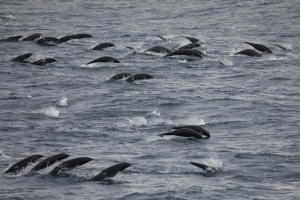 Even if you didn’t like whales, (and go get a therapist if that’s true, because who hates a whale?) they are a keystone species, and without them a lot of fisheries around the world would collapse. Whale poop is the great fertilizer of the global ocean. We know that, in part, because of NOAA research.
Even if you didn’t like whales, (and go get a therapist if that’s true, because who hates a whale?) they are a keystone species, and without them a lot of fisheries around the world would collapse. Whale poop is the great fertilizer of the global ocean. We know that, in part, because of NOAA research.

